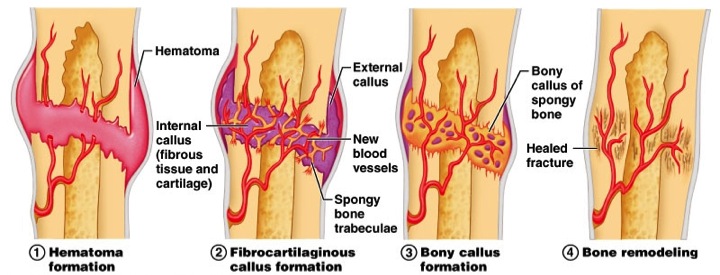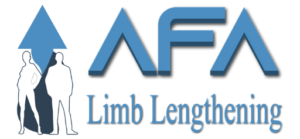Limb lengthening bone healing refers to the specific process of bone healing that occurs after limb lengthening surgery. Limb lengthening is a surgical procedure performed to increase the length of a leg or arm bone to address conditions such as cosmetic height lengthening , limb length discrepancies or skeletal deformities. The bone healing process in limb lengthening is unique due to the intentional separation of bone segments and the subsequent regeneration of new bone tissue.
The primary technique used in limb lengthening procedures is called distraction osteogenesis. Here are the key steps involved in limb lengthening bone healing:

- Surgical Procedure: An osteotomy, or controlled bone cut, is performed at the desired location in the bone. This may involve cutting the bone completely or creating a partial cut, depending on the specific surgical technique used.
- Fixation Device Placement: External or internal fixation devices are used to stabilize the bone segments and facilitate the distraction process. External fixation devices consist of pins or wires attached to a frame outside the body, while internal fixation devices such as intramedullary nails or plates are inserted inside the bone.
- Inflammatory Phase: Immediately following the bone injury, there is an inflammatory response triggered by the body’s immune system. Inflammatory cells, such as white blood cells, rush to the site of injury to remove any debris, dead cells, and bacteria, while releasing chemical signals that initiate the healing process.
- Latency Phase: Following the surgical procedure, a period of latency or rest begins. During this phase, the bone segments are left undisturbed to allow for initial healing and the formation of a callus at the osteotomy site. This phase typically lasts for about a week or more.
- Soft Callus Formation: In this stage, specialized cells called chondroblasts and fibroblasts migrate to the fracture site. Chondroblasts produce a soft cartilaginous callus, while fibroblasts form a fibrous tissue matrix. The soft callus stabilizes the fracture site and acts as a bridge between the broken bone ends.
- Distraction Phase: After the latency phase, the distraction phase begins. The fixation device is adjusted incrementally, usually on a daily basis, to gradually separate the bone segments. This separation creates a gap or lengthening zone between the bone ends.
- Regeneration and Consolidation: As the bone segments are gradually separated, the body’s natural healing response is triggered. New bone tissue starts to form within the gap, originating from the bone ends and surrounding tissues. This process is known as regeneration. Simultaneously, the existing bone tissue undergoes a remodeling process, consolidating and becoming stronger.
- Hard Callus Formation: Once the desired length is achieved, the distraction phase is stopped, and the bone segments are allowed to consolidate. Osteoblasts, bone-forming cells, infiltrate the soft callus and begin depositing layers of new bone tissue, which gradually transforms the soft callus into a hard callus. This process is known as ossification. The hard callus provides increased stability and structural support to the healing bone.
- Remodeling Phase: Over time, the hard callus undergoes remodeling, where osteoclasts, bone-resorbing cells, break down the excess bone tissue, and osteoblasts deposit new bone. This remodeling phase aims to restore the bone’s original shape, strength, and alignment. It can last for months or even years, gradually replacing the initial callus with mature, organized bone.
Limb lengthening bone healing requires close monitoring by a healthcare team specialized in orthopedic surgery and limb reconstruction. Regular follow-up visits, imaging studies, and adjustments to the fixation devices are typically part of the treatment plan to ensure the healing process progresses as intended.
Factors Affecting Bone Healing
- Genetics:Genetics can play a role in influencing the speed of bone healing. Genetic factors can affect an individual’s bone density, bone mineralization, and overall bone health, which can impact the healing process. Certain genetic variations have been associated with differences in bone healing capacity. For example, some genetic markers are linked to increased bone density and strength, which may contribute to faster healing. On the other hand, specific genetic variations can be associated with reduced bone density or impaired bone metabolism, potentially leading to slower or compromised bone healing.
- Age: Younger patients tend to have better bone healing capacity than older individuals. The safe age limits for leg lengthening surgery are between 20-50.
- Operated Bone: The femur tends to have the potential to heal faster than the tibia due to blood supply. The femur generally has a more blood supply compared to the tibia. The blood vessels that supply oxygen, nutrients, and immune cells to the bone are more extensive in the femur. This increased blood flow provides essential resources for bone healing and supports a faster healing rate.
- OverallHealth: General health, including nutritional status and the presence of chronic conditions like diabetes or osteoporosis, can impact bone healing.
- Smoking: Smoking is known to impair bone healing and increase the risk of complications.
- Medications: Certain medications, such as corticosteroids or immunosuppressants, can interfere with the healing process.
- Surgical Technique: The choice of surgical technique, such as external fixation or internal fixation (e.g., intramedullary nails), can affect bone healing outcomes
- Stability: Adequate stability provided by the fixation device is crucial for successful bone healing.
- Soft Tissue Handling: Proper soft tissue handling during surgery minimizes trauma and preserves blood supply, promoting better healing.
- Distraction Rate: The rate at which the bone is gradually distracted impacts the bone healing process. Too rapid distraction may lead to poor bone formation, while excessively slow distraction may prolong the healing process.
- Compliance with Rehabilitation: Following the prescribed rehabilitation protocols, including physical therapy and weight-bearing instructions, is crucial for optimal bone healing and functional recovery.
- Nutrition: Adequate nutrition, particularly a balanced diet rich in protein, calcium, vitamin D, and other essential nutrients, supports bone healing and tissue repair.
- Complications: The presence of complications, such as infection, poor wound healing, or non-union (failure of bone ends to unite), can significantly affect the bone healing process.
It’s important to note that each individual’s situation is unique, and the impact of these factors can vary. Orthopedic surgeons and healthcare professionals assess these factors during preoperative evaluations to develop personalized treatment plans and optimize bone healing outcomes.
Accelerating Bone Healing after Limb Lengthening Surgery
Accelerating bone healing after leg lengthening (height increase) surgery is a complex process that requires proper medical care and adherence to specific guidelines. While each case is unique, here are some general measures that can potentially promote bone healing:
- Follow the surgeon’s instructions: It is crucial to adhere to your surgeon’s postoperative instructions, including weight-bearing restrictions, physical therapy exercises, and medication schedules. These instructions are tailored to your specific case and are designed to optimize bone healing.
- Optimal distraction rate: The distraction rate should be carefully controlled to promote optimal bone healing. Too rapid distraction can create excessive tension and stress on the surrounding soft tissues and the newly formed bone, potentially leading to poor bone formation or complications. Generally, the optimal lengthening rate is 1 mm per day for the femur and 0.75 mm per day for the tibia.
- Weight-Bearing exercises contribute to the strengthening of bones by inducing adaptive responses. When bones are subjected to mechanical stress, they undergo a remodeling process where old bone tissue is replaced with new, stronger bone tissue. This results in increased bone strength and resilience.
- Maintain a balanced diet: Proper nutrition and supplement are essential for bone healing. Ensure that your diet includes an adequate amount of protein, calcium, vitamin D, and other essential nutrients. Consult with a nutritionist or your healthcare provider to create a meal plan that supports bone healing.
- Quit smoking: Smoking has a detrimental effect on bone healing. If you smoke, it is highly recommended to quit smoking both before and after surgery to improve your chances of successful bone healing.
- Manage chronic health conditions: If you have any chronic health conditions such as diabetes or osteoporosis, it is important to manage them effectively. Keep your blood sugar levels controlled and follow your healthcare provider’s recommendations for managing your condition.
- Supportive therapies: Your surgeon may recommend certain supportive therapies to enhance bone healing. These can include the use of bone stimulators, which utilize electrical or ultrasound energy to stimulate bone growth. Talk to your surgeon about whether these therapies are appropriate for your case.
- Regular follow-up visits: Attend all scheduled follow-up appointments with your healthcare provider. They will monitor your progress, evaluate bone healing(xrays), and make any necessary adjustments to your treatment plan.

